5 Instances of a batsman bagging a duck despite others scoring heavily
Here are the top Instances of a batsman bagging a duck where remaining players recorded good scores.
2 Min Read
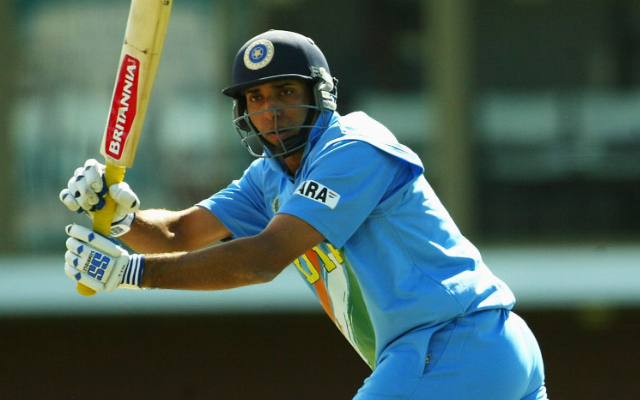

VVS Laxman. (Photo Source: Getty Images)

Quite often we find many top batsmen being the lone performers while playing for their team despite any of the remaining players scoring at least 20 runs or even reaching double digits. On a parallel note, there are instances of all the players who got a chance to bat in an innings making it big.
But in this article, we take a look few instances where top-order batsman got out for a duck in an innings where his teammates made merry of the opposition’s bowling attack.
Here are the top Instances of a batsman bagging a duck where remaining players recorded good scores:
5. West Indies (1st innings) vs New Zealand in 1952 Auckland Test:
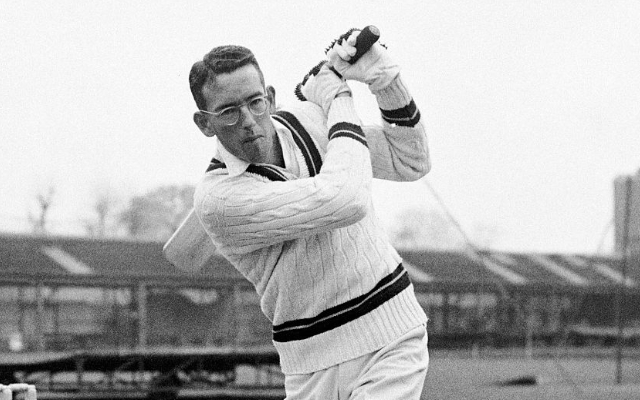
West Indies took 1-0 lead in the 2-match Test series during their tour of New Zealand in 1951-52. New Zealand invited the visitors to bat first in Auckland where the opening pair of Allan Rae and Jeffrey Stollmeyer added 197. The partnership was finally broken when Allan was dismissed for 99. The Kiwis managed to pick one more wicket quickly as No.3 batsman Roy Marshall was dismissed for a duck.
Later, Sir Everton Weekes shared a 115-run partnership for 3rd wicket with Stollmeyer. Jeffrey got out scoring 152 soon after Weekes fell for 51 runs. It marked the beginning of another huge partnership this time between Sir Frank Worrell and Sir Clyde Walcott. The duo put on 189 for the 5th wicket before Worrell fell for exactly 100 runs. Denis Atkinson joined Walcott who was nearing his century.
West Indies declared their innings at 546/6 after Walcott departed scoring 115 while Atkinson remained unbeaten on 8 runs. Among the West Indies’ top six, everyone except Roy Marshall made merry with the bat. West Indies, later bundled out New Zealand to 160 and enforced the follow-on before the game ended in a draw. The Caribbean team walked away with a series win with a scoreline of 1-0.
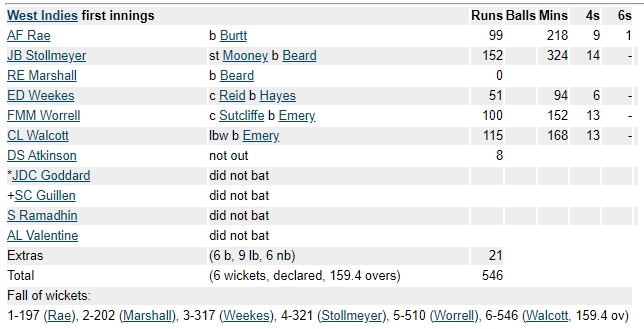
4. India vs New Zealand in 2001 Colombo ODI:

India and New Zealand clashed off in Colombo during the last round-robin game of the 2001 Coca-Cola Cup which was hosted by Sri Lanka. Both the teams won two of the five matches they played till that point. Hence, the winner of this game was set to be part of the final alongside the home team. New Zealand elected to bat first and posted a solid total of 264/7 in their 50 overs.
Nathan Astle’s 108 was backed by skipper Stephen Fleming’s 66 and a quick 45 by Lou Vincent. A lot of pressure was on Virender Sehwag who had scores of 33, 27 and 0 respectively in his first three innings as an opener. Sehwag stepped up in the crucial match smashing 12 fours in the first 29 balls to complete his fifty. In the 11th over, the dashing opener smashed four successive fours and a six to bring the required run-rate below 5.
He kept finding the fence regularly and raised his maiden ODI hundred in only 69 balls but fell on the very next ball. By then, India were 143/1 in 23.1 overs while his opening pair Sourav Ganguly scored only 40 off 70 balls. The Indian team were reduced to 179/3 by 33rd over as VVS Laxman bagged a 9-ball duck while Ganguly departed after scoring 64 from 103 deliveries.
Rahul Dravid, was batting on 6 off 16, pressed on the accelerator button as Ganguly’s dismissal raised India’s RRR to 5 again. Dravid put on 88 runs for the 4th wicket in only 77 balls with Hemang Badani to guide into to a 7-wicket win with 26 balls to spare. Dravid finished with 57* from only 56 balls while Badani made 35* off 38 deliveries. Laxman was the only individual to fail with the bat for India that too by bagging a duck.
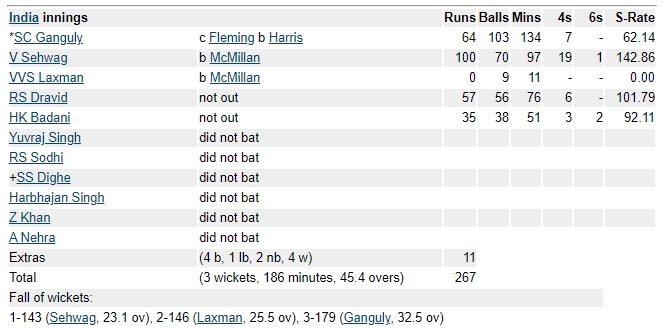
3. Australia (2nd innings) vs India in 2003 Brisbane Test:
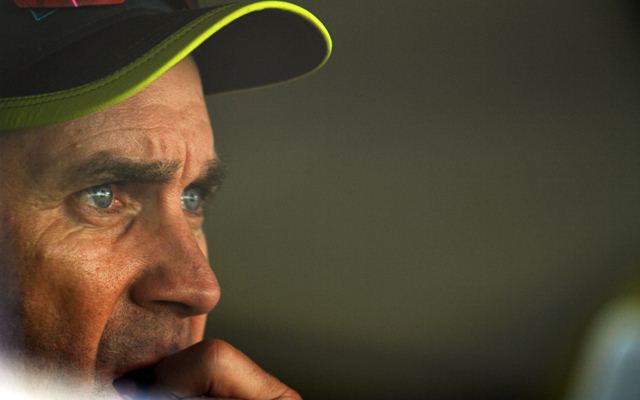
India’s tour of Australia in 2003-04 was comprised of a 4-match Test series and a VB Tri-series involving Zimbabwe as the 3rd side. The first of the four Tests was hosted by Brisbane where the home team posted 323 in the first innings thanks to a century from Justin Langer. Indian captain Sourav Ganguly’s aggressive 144-run knock helped India to earn an 86-run lead in the rain truncated game. Australia’s second innings began in the second hour of an extended final day’s play.
Langer was dismissed for a 6-ball duck in the second over of the innings. But Matthew Hayden and Ricky Ponting added 140 runs for the 2nd wicket in only 160 balls. Ponting fell after scoring 50 off 75 balls while Hayden got out on 99 in the next over which came in only 98 balls with 12 boundaries. Damien Martyn (66*) and captain Steve Waugh (56*) put on an unbeaten 128-run stand for the 4th wicket in 32.1 overs before the Aussies declared their innings on 284/3.
It is the only innings in Test cricket where only five players batted out of which four went past 50-run mark and another batsman getting out for a duck. Justin Langer was the unfortunate batsman, who, however, scored a hundred in the first essay. India needed to chase 199 in only 23 overs but lost their both opener for 4 runs in 1.2 overs. Dravid and Laxman shared 69 for the 3rd wicket in 88 balls before both the teams agreed for a draw.
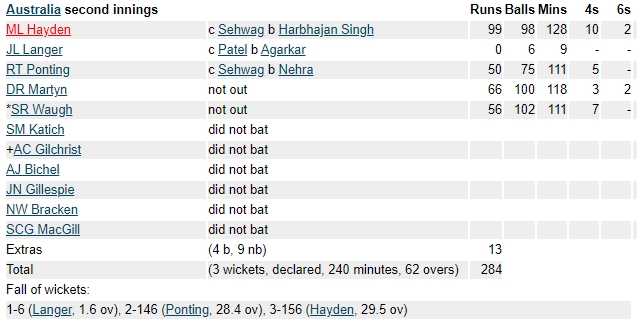
2. South Africa vs Netherlands in World Cup, 2007:
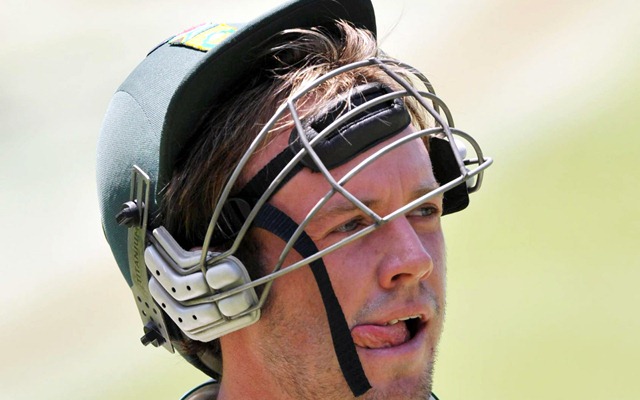
South Africa took on the Netherlands during the Group A game of the 2007 World Cup. The overnight rain in St Kitts made the outfield wet and the match eventually began as a 40-over affair. AB de Villiers got out on the 2nd ball of the match without scoring as he was caught behind trying to slash a delivery outside off stump. The other opener, Graeme Smith, the captain of South Africa scored 67 off 59 balls with 8 boundaries and shared a 114-run stand with Jacques Kallis in 112 balls.
Later, Kallis added 105 with Herschelle Gibbs for the 3rd wicket in only 71 balls. The partnership was dominated by Gibbs who smashed 72 from 40 balls including six maximums in an over. Kallis anchored the Proteas’ innings with a 60-ball fifty and was batting on 76 off 85 balls when Mark Boucher joined him. The duo smashed 134 runs in only 9.1 overs to power South Africa to finish on 353/3 in the restricted 40 overs. Kallis ended unbeaten on 128 from 109 balls with five sixes and 11 fours.
Boucher assault lasted only 36 minutes but it was enough for him to score 75 from 31 balls with 13 boundaries. This innings of South Africa is the only such one in ODI cricket where only five players batted out of which five of them scored 50+ runs while the other batsman getting out for a duck. The Netherlands were limited to 132/9 and lost by 221 runs despite Ryan ten Doeschate scoring a 74-ball 57.
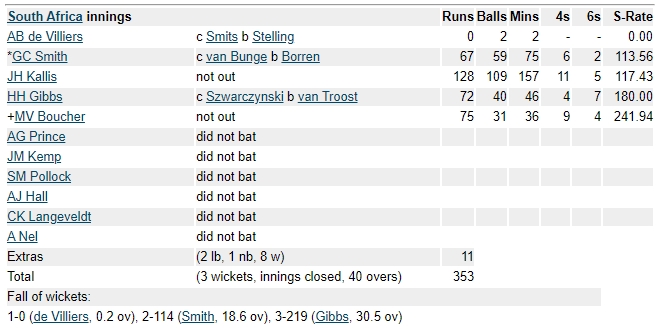
1. South Africa (1st innings) vs England in 2012 The Oval Test:
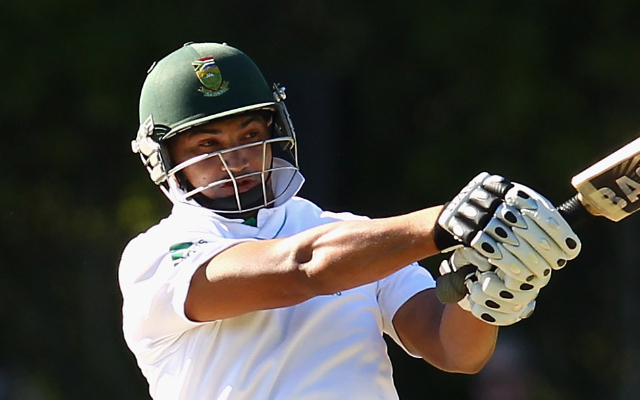
South Africa took on England during a 3-match Test series to clinch the No.1 Test team ranking. The series began at The Oval where England posted 385 in the first innings with help of Sir Alastair Cook’s 115. South Africa’s reply began to Alviro Petersen bagging a duck in the 3rd over with only one run on the board. But, skipper Graeme Smith and Hashim Amla put the visitors on top with a 259-run stand that lasted 84.3 overs. Smith was dismissed for 131 before getting cleaned up by Tim Bresnan.
England found no more success in the next seven hours until South Africa declared their innings at 637/2. Amla and Jacques Kallis shared a record unbeaten 377-run partnership for the 3rd wicket in 101.5 overs. Hashim Amla, in this process, became the first player in South Africa’s Test history to smash a triple century. Amla scored 311 runs from 529 balls with 35 fours. Kallis, on the other hand, remained unbeaten on 182 during his 326-ball innings which included 23 fours and a six.
Petersen’s duck and centuries by Smith, Amla and Kallis saw South Africa recording the first instance in International cricket of three players scoring a hundred and other batsman getting out for a duck in an innings where only four batted. South Africa went on to win the Test match by innings and 12 runs by bundling out the hosts to only 240. The Proteas went on to win the 3-match Test series by 2-0 margin and became the No.1 ranked Test team.
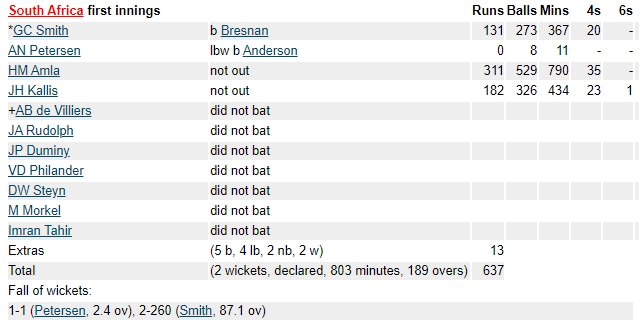
Download Our App